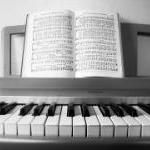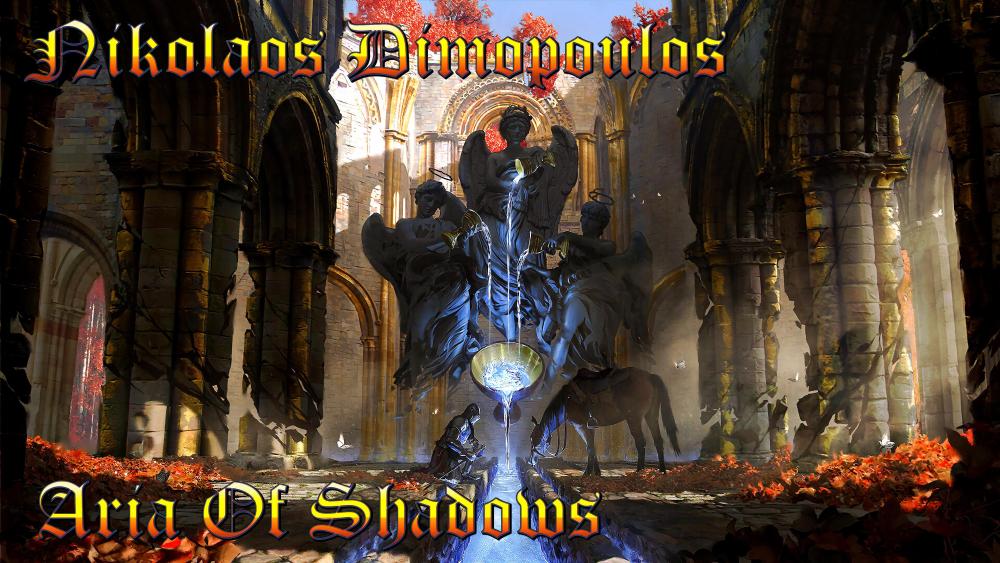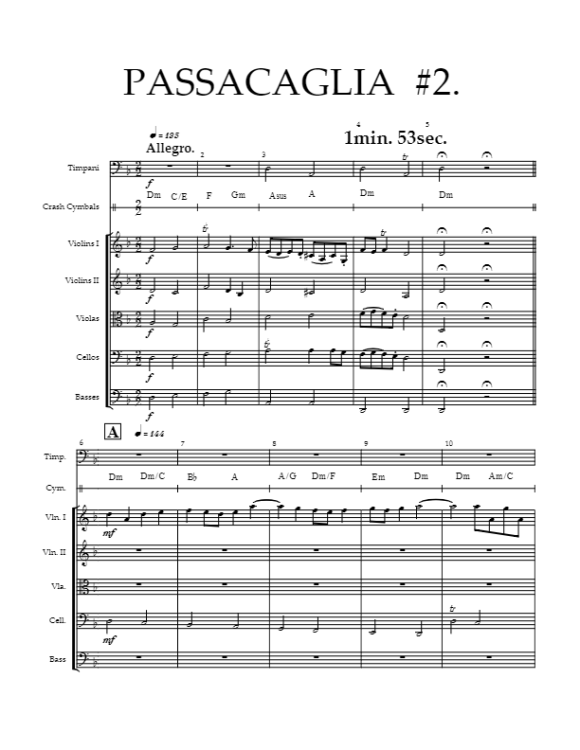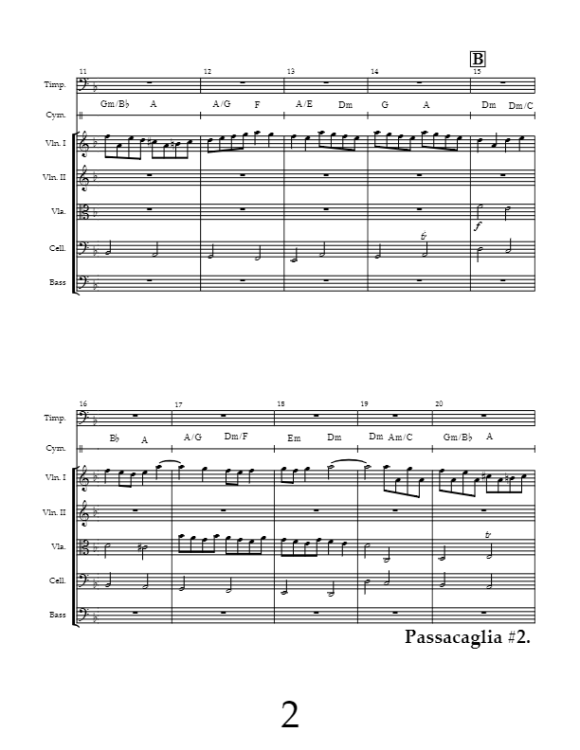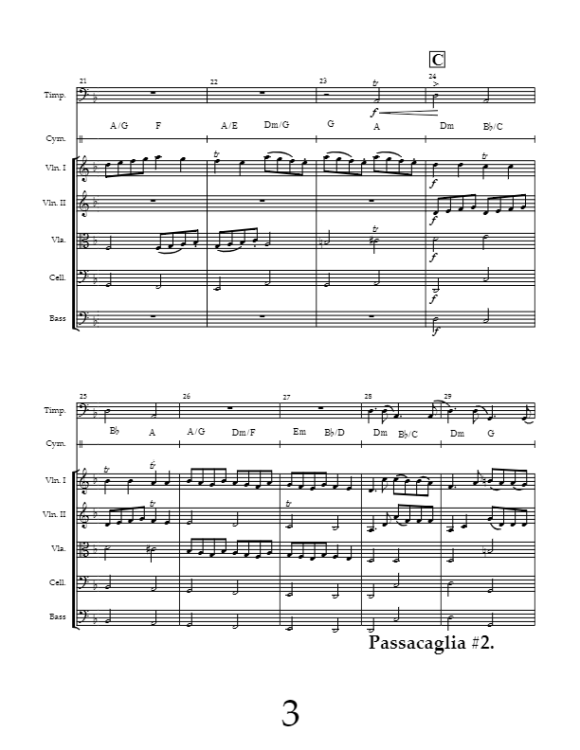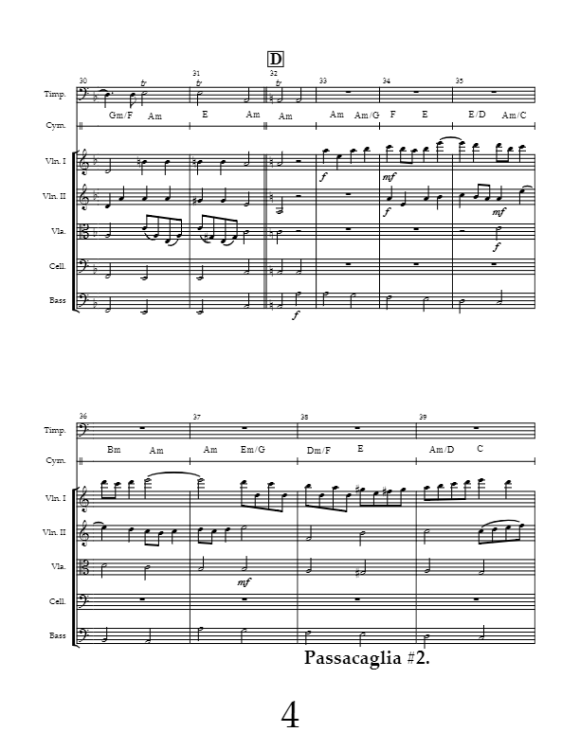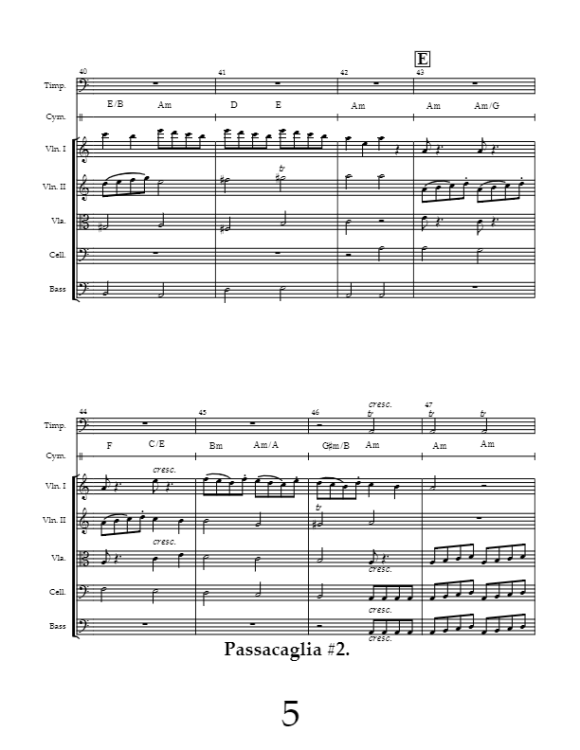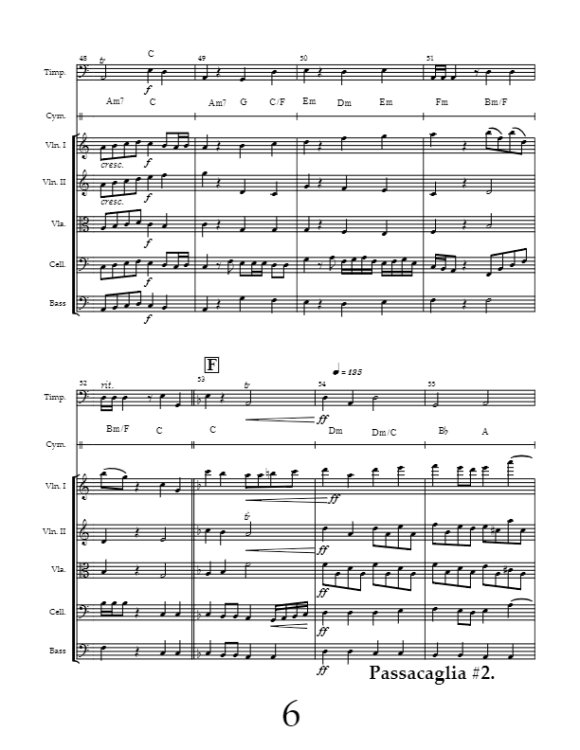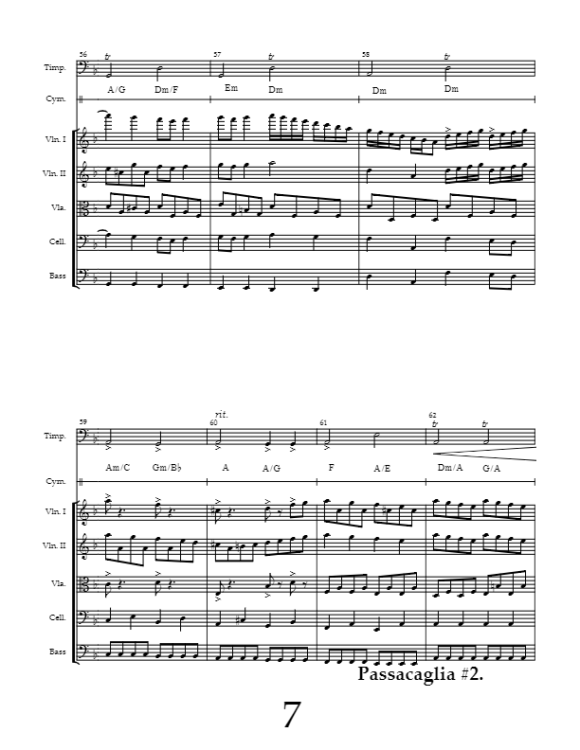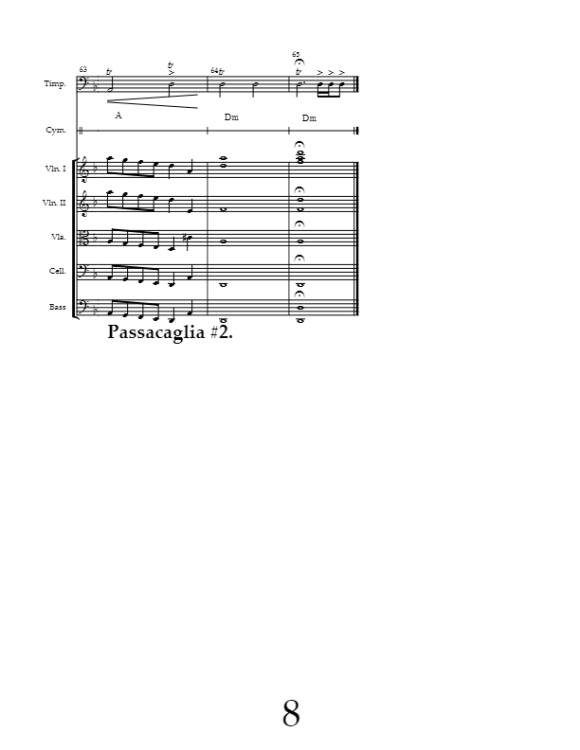Search the Community
Showing results for tags 'orchestra'.
-
'If They May Dance' is quasi-programmatic, depicting a waltz that continually rises and falls until reaching a bombastic conclusion. A main melody is weaved into the piece itself: it constantly changes into slightly different forms to keep the piece cohesive. This work is the summit of my composing career so far. It also marks the longest time I've ever spent on a singular piece (~4 months). I'm pretty happy with it, and I don't really have much else to say about it. My progress throughout is documented in this thread; if you're interested, feel free to check it out. As usual, all feedback is appreciated! Would love to hear from you all 😊
-
Good evening fellow composers! I am very excited to present my latest project, a mockup of Grieg's "Peer Gynt Suite No. 1: I. Morning Mood"! I've been trying to improve my production skills by making mockups of some major works. The goal is to create as realistic-sounding of a representation of a real orchestra as possible. Please feel free to leave any feedback you may have regarding the quality of the performance. Feel free to put your "conductor hat" on and imagine this is a live orchestra: what would you tell them to improve the performance? Sound libraries Synchron Strings Pro Synchron Woodwinds Synchron Brass Spitfire Percussion Thanks for listening, I hope you enjoy! If you liked something I did and want me to explain how I did it, feel free to ask. -gmm
-
A wonderful video sprang across my YouTube feed a few days ago. All the information in the video was news to me -- essentially, the claim is that we've been playing the Beethoven "Moonlight Sonata" the wrong way for two centuries, inspired by a poor nickname that really doesn't fit the piece at all! The professor's fresh interpretation of the first movement at the end of the video suddenly inspired me to try to orchestrate the piece, as I was having a lot of interesting ideas I thought I might try in order to create a really unorthodox interpretation. Before this week I had always thought Moonlight was a sort of cliched piece, but the professor brought it back to life and showed me it's famous for a reason.... The work was surprisingly quick, even though I was also trying Musescore 4 for the first time. Figured I'd give it a whirl on a short side project rather than a main composition. (Spoiler: it's actually pretty awesome. The sounds are amazing.) My overall aim was to recreate some of the tragic funeral march character that is usually lost in most modern interpretations, but also to emulate the "ghostly" quality of which Carl Czerny spoke. I've accordingly created more active, dense, even "smeary" textures instead of transparent and simple ones. Overall I want to kill the whole notion that this piece is supposed to be "relaxing"! This was a great orchestration challenge for me. Some of the creative decisions I made were born of necessity; others were just pure indulgence on my part. I actually took a lot of liberties; the piece is faithfully adapted insofar as the overall structure and proportions are preserved, but I freely modify harmonies and add new voices and contrapuntal layers where I see fit. The bass clarinet and contrabasses both need low Cs for this transcription.
-
Trying something crazy - it might not work, but it's fun to try new things I have a piece that I've arranged for band/orchestra and I was thinking it'd be cool to do a virtual band type recording Here's the link to the project drive - https://drive.google.com/drive/folders/1cYfbUEXY9swZi-ZbNb6YI8oMmblUlloM?usp=sharing I have a piano track playing the melody at the correct tempo to keep everyone on track *IF YOU'RE PLAYING ANY OTHER INSTRUMENT OTHER THAN ALTO SAX, THOSE RECORDING INSTRUCTIONS/RECORDING ORDER ARE FOR YOU - ALTO SAX PLAYERS DISREGARD* Let me know if you have any questions
-
Hello This is the third part of the orchestral suite, although I am not at all sure it is a suite, but rather single works. I'll have to listen to them in one go to see if they add up for me. In fact in this last part there are some things that are more advanced in stylistic time. It consists of the following parts: A1 Theme in Gm B1 Chromatic sequence from Gm to Amaj A2 Theme in Dm C1 and C2 Intermediate part polyrhythmic! B2 Chromatic Sequence from Fm to Gmaj D1 and D2 Final Adagietto in G - ending in Emaj The chromatic sequences are inspired by romanticism (Chopin used them a lot). The polyrhythmic part took me a while to get it right in the editor, but when something gets stuck in my head... It sounds quite impressionistic, to me. Anyway, if it makes someone spend a few pleasant minutes, that's fine. I didn't want to make something long, or repeat the same parts, which I don't like at all.
-
I am writing a piece for orchestra which is currently unfinished. I am planning to make it a one-movement piece, and this is what I have so far. Let me know what you think and if there is anything I can improve
-
(I'm reposting here because I do not consider this a draft, though I will consider changing it after I'll get feedback) This is the first movement to my first symphony. Drafts have been posted here: Symphony in F minor.pdf Symphony in F minor.mp3
- 8 replies
-
- 2
-

-
- orchestra
- movement 1
-
(and 1 more)
Tagged with:
-
Well it was my first orchestral piece, form 2017 (I was nine years old I think?). Copied it to MS4 for comfortability, and I share it here because why not.Revenge.pdf BTW it was the theme for my D&D campaign called "Revenge", so... yeah it's not a "nice" piece in terms of mood. I'll recycles those motifs, they were great.
-
Nikolaos Dimopoulos - Aria Of Shadows Hi everyone! I am new here and I am very happy to join this forum! As a new member I'm hungry for honest feedback! So, this is one composition of mine with choirs, orchestra and a fast waltz finale! Good listening!
-
Just yesterday I sat at the piano for hours trying to figure out a simple riff or a motive that feels unique/different. I finally decided on a basic G Major phrase that would repeat itself or "stand out" in my 15th Concerto classical composition. The finish is a little bit of a reach out however it seems to achieve solid closure and resolve the composition.
-
I wrote this a while ago and listened to it again today and remembered how nice it was, its light music. The work has a fluid form, it's more like a stream or flow of conciousness on a few motivic ideas, so it's both changing and staying the same all the time. The harmonies are good old triads expanded via non-functional (mostly) non-clashing diatonic extensions. I remember I made up some rules for the counterpoint and that it was relatively straight-forward to compose but not much else. The "Bach alla Renaissance" is because it is polyphonic, rather traditionally, but the scales are (the modern) church modes. Modes of Accord.mp3
- 2 replies
-
- bach
- renaissance
-
(and 2 more)
Tagged with:
-
Good afternoon fellow composers! I am very excited to present my latest large scale work, the first movement of my Symphony No. 1. My plan for the symphony is for it to be a “complete concert experience” with two large scale movements surrounding two shorter and lighter movements. This first movement is thus quite long, clocking in at a little over 27 minutes. It is intended to be almost a “symphony within a symphony”, preparing tension to be resolved later in the work, while still functioning as a standalone piece in its own right. I had a few goals in mind as I composed this, feel free to evaluate how well I achieved them: Focus on simple, memorable themes and motives Write a large scale opening symphony movement that could also function as a standalone piece Build a large movement on the development of two simple motives, specifically Motive 1 - a sequential 5th motive, first in the bass clarinet and bassoon at the beginning Motive 2 - an alternating ascending, descending motive, first in the low winds/strings and English horn/saxophone in the B section Integrate euphonium and saxophone into the orchestra Make use of auxiliary brass The movement is structured as a Rondo (A-B-A-C-A-D-A-B-A-coda), albeit with several creative liberties taken. Since it is quite long I’ve broken it down into several smaller sections if you prefer to only listen to a small piece. The structure is detailed below: 00:00 - A section - the piece begins quietly with sustained notes in the basses, with the low winds introducing Motive 1. This is repeated and embellished by the oboe and others 1:38 - B section - the broad opening theme gives way to a heavy and ominous pulse in the low strings and woodwinds. Motive 2 is introduced here first in the English horn and saxophone, then expanded and embellished, and leads up to a climax 4:46 - the A section returns, this time building into a brassy fanfare, but left unresolved. This section ends with a lively cacophonous polyrhythmic buildup that develops Motive 1 and leads into the next section 6:56 - the C section opens with a contrapuntal section, which utilizes and expands Motive 2 within octatonic scales that plane between each other, then leads into an ominous ascending theme (an inversion of Motive 2) that climaxes with a fiery rhythmic dance in frequently changing time signatures, this is repeated, then interrupted by a quiet irregular heartbeat in the harp and celesta, that eventually erupts before returning to the opening contrapuntal figure, this time in the woodwinds 11:05 - the A section theme returns briefly, this time as stacked fifths in the brass, and stated explicitly by the muted horns 11:45 - the D section begins with a lyrical theme in the English horn (formed by combining and rearranging Motive 1 and Motive 2), which is passed back and forth between the saxophone and bassoon. The texture slowly winds down, allowing a woodwind choir to emerge. The mood is bleak, but the strings enter and the mood shifts suddenly to hopeful and optimistic, before an epiphany is reached. The key returns to C major for one more buildup to the climax, with the brass exclaiming Motive 1, this time in a major mode. 15:50 - formal return to the A section, with mostly the same structure but the instrumentation is varied 17:27 - formal return of B section, this time a quiet horn solo prepares a fast whirlwind of a climax, before coming to a halt and preparing for the return to… 21:37 - the A section fanfare returns, this time enhanced by auxiliary brass. The climax is more resolved, but still leaves something wanting before the cacophony from earlier in the movement leads into the coda 24:09 - Coda - the ominous ascending theme returns here and is used to build tension along with distortions of the fiery dance from the C section. The irregular heartbeat returns as well, and leads into a chaotic polyrhythmic volcano that over flows into the final statement of the two motives overlaid on top of each other, traded back and forth between the auxiliary brass and the orchestra As usual, I have several questions for feedback, feel free to answer as many or as few as you wish: What effect does the music have on you? Does in conjure up an image? Or an emotional feeling? Does it tell you a story? This can be the piece as a whole, or a specific part or parts. What was your favorite part? What was your least favorite part? Does this work well as the first movement of a symphony? How about as a standalone piece? How well do you think the motives are developed? Do you have any comments or critiques on technique, e.g. harmony, melody writing, counterpoint, orchestration, voice-leading, etc.? How do you feel about the overall form? Is it effective? How well do you think the euphonium and saxophone are integrated with the rest of the orchestra? Do you have any comments of the quality of the performance in the audio file? I really want this to be a decent representation of how the piece would sound if it were performed live, since it is unlikely it ever will be. Feel free to put your "conductor hat" on and critique the "orchestra". I have included a score and welcome any constructive feedback on its presentation. And if you're like me it's a lot more fun to follow along with the score. Are there any composers this reminds you of, that I might enjoy listening to? Sound libraries Spitfire Symphonic Orchestra and Spitfire Percussion VSL Synchron brass and woodwinds Thanks for listening, I hope you enjoy! If you liked something I did and want me to explain how I did it, feel free to ask. -gmm Score link here
-
I'm excited to finally have completed this! EXCEPT for the TIMPANI part!!!! After weeks and weeks of intensive orchestration study and several attempts at an orchestral work. I think this is my first serious orchestral work. The material is straightforward. The work is a combination of through composed and ABA' form. The material develops throughout. The ending finishes with the same material as the first -but with a more clear direction to the finality of the material. I may tweak the ending a bit to make it fit my vision of the section. I'm happy with the material itself -I'd love to have orchestration tips and tidbits. I'll be tweaking the score up to better the work. Overall, I'm happy with it!
- 8 replies
-
- contemporary classical
- fantasy orchestral
-
(and 1 more)
Tagged with:
-
Hello everyone, This is my new recent/short composition for the orchrestra. I posted this on the reddit page and received amazing feedback. I would like to have some more general opinions in case I could further synthesize and finalize my score. Score Video Score (Pages 14 and 20 do cut out at the bottom) Here are some general concerns: Is the Orchrestration good and balanced? Are the Harmonies functional/pleasant?(received some advice on this one) Is the Melody Strong and Memorable?(Quite a few mixed opinions) Thank you again and happy new year to all.
-
This was my entry for the National Young Composers Challenge. I did not end up winning, but the judges enjoyed it, particularly the introduction. I will definitely be participating again for next year. This was also my first test of the new MuseSounds, and I am very excited about it. I was quite impressed with the realism of it, though I don't really like the trumpet all that much, as the dynamics are inconsistent. Feedback is definitely appreciated, especially since I am planning on expanding the material into a full symphony.
-
This pirate themed track "Ghosts of the Ocean" is a release back from July. I was curious to hear other composer's opinions and thoughts on the composition. I create all of my music using virtual instrument libraries (namely from Spitfire Audio) and was also curious if anyone had any suggestions on certain libraries that would enhance a score like this. Thank you for listening! Spotify Link YouTube Link (edited)
-
It took me a few months, but I finally completed my most recent work for orchestra. This piece is nominally in scherzo-trio form, with some slight modifications. Each scherzo is itself also binary in the manner of a sonata form exposition and recapitulation. The trio is actually a waltz, slowly built up from nothing via the gradual introduction of cliches. Though it seems to be unrelated to the scherzo at first, I bridge the gap with the transition back into the scherzo. The strict metric modulation to precisely half-tempo for the trio is critical. In the concluding fugato, both themes from the scherzo are combined simultaneously. Score video:
-
Do let me know what you think of it. Constructive criticism is welcome 🙂
-
This is my entry into the music composing competition in Sacile, Italy, that needs to be submitted by the end of this month, April. I would be very grateful for any comments regarding technical issues that would annoy conductors, confuse judges or distress players. The orchestra is made of very competent amateurs who have come together for a weekend conference, so the judges have asked composers not to unnecessarily stretch players. Any comments and criticisms gratefully received. Morgan.
- 3 replies
-
- passacaglia
- la luce
-
(and 2 more)
Tagged with:
-
Hey all, This is a piece I wrote in the Spring of '21 for my composition lessons. Programmatically, the is based on the following quote: "All truth passes through three stages: First, it is ridiculed. Second, it is violently opposed. Third, it is accepted as self-evident." - Arthur Schopenhauer This was my first time writing for an orchestra this large and also my first time combining orchestration with a more modern compositional style.
- 2 replies
-
- orchestra
- orchestration
-
(and 1 more)
Tagged with:
-
A piece for encouraging myself to be brave and strong
-
RECUERDO.pdfRECUERDO.mp3
-
This last Sunday, my new piece, "Tastes of the Orchestra," was premiered at the Dubuque Symphony's Summer Melodies concert. I would love to hear your thoughts, comments. Thank you for listening! Score video:
- 2 replies
-
- minimalism
- textural
-
(and 1 more)
Tagged with:


